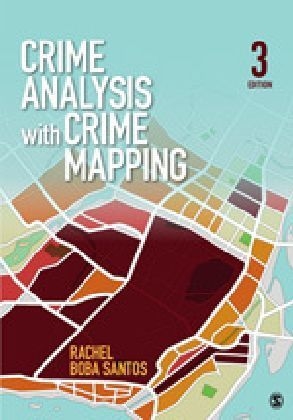
Crime Analysis With Crime Mapping
SAGE Publications Inc (Verlag)
978-1-4522-0271-6 (ISBN)
- Titel erscheint in neuer Auflage
- Artikel merken
Crime Analysis with Crime Mapping, Third Edition continues to provide a basic introduction to the field of crime analysis for students and practitioners, covering its history, key concepts, data, and techniques. Instead of focusing on specific technology or the use of it, the text focuses on fundamental concepts and their practical application as well as illustrative examples. As the only introductory core text book for crime analysis, this comprehensive text is used across the country to provide a foundation for students looking to enter the field as well as is the book that every crime analyst should read and have on the shelf for review and reference.
Rachel Boba Santos is a professor at Radford University in the Department of Criminal Justice. She works with police departments and crime analysts. She conducts experimental and applied research on place-based and offender-based police crime reduction strategies, stratified policing, crime analysis, community engagement, and police use of force. Dr. Santos′ interests include conducting practice-based research which is implementing and evaluating evidence-based practices in the “real world” of criminal justice. In particular, she seeks to improve crime prevention and crime reduction efforts by police in areas such as crime analysis, problem solving, accountability, as well as leadership and organizational change. She and Dr. Roberto Santos co-created Stratified Policing which is an organizational model for systemizing proactive crime reduction strategies in police departments. Other areas of research include police/researcher partnerships, police/community collaboration, hot spot and problem-oriented policing, predictive policing, environmental criminology, crime and place, police/crime data and technology, experimental research methodology, and program evaluation.
Preface
PART I: FOUNDATIONS OF CRIME ANALYSIS
Chapter 1: Crime Analysis and the Profession
Chapter 2: Theoretical Foundations of Crime Analysis
Chapter 3: Effectiveness of Police in Reducing Crime and the Role of Crime Analysis
PART II: CRIME ANALYSIS PROCESS, DATA, AND PURPOSE
Chapter 4: Crime Analysis Process and Application
Chapter 5: Crime Analysis Data
Chapter 6: Geographic Data and Crime Mapping
Chapter 7: Crime Analysis Purpose and Audience
PART III: TACTICAL CRIME ANALYSIS
Chapter 8: Repeat Incidents and Tactical Data Collection
Chapter 9: Pattern Identification Process
Chapter 10: Identifying Meaningful and Useful Patterns
Chapter 11: Describing and Disseminating Known Patterns
PART IV: STRATEGIC CRIME ANALYSIS
Chapter 12: Analyzing Problems: Process and Statistics
Chapter 13: Analyzing Problems: Application of Techniques, Part I
Chapter 14: Analyzing Problems: Application of Techniques, Part II
Chapter 15: Strategic Crime Analysis Results and Dissemination
PART V: ADMINISTRATIVE CRIME ANALYSIS AND CONCLUSIONS
Chapter 16: Administrative Crime Analysis
Chapter 17: Conclusions, Challenges, and Future Issues
Glossary
References
Index
About the Author
| Erscheint lt. Verlag | 8.5.2012 |
|---|---|
| Verlagsort | Thousand Oaks |
| Sprache | englisch |
| Maße | 177 x 254 mm |
| Gewicht | 620 g |
| Themenwelt | Recht / Steuern ► Strafrecht ► Kriminologie |
| ISBN-10 | 1-4522-0271-0 / 1452202710 |
| ISBN-13 | 978-1-4522-0271-6 / 9781452202716 |
| Zustand | Neuware |
| Haben Sie eine Frage zum Produkt? |
aus dem Bereich



